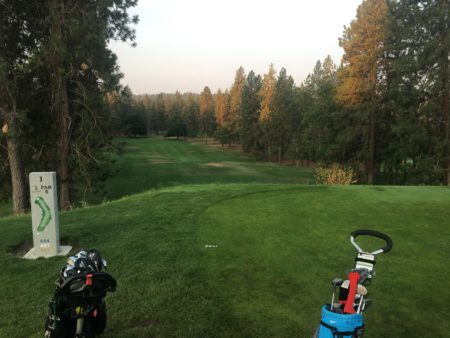by Bob Bostwick
As the heat of a wish-we-could-forget summer finally wanes, Spokane’s Downriver Golf Course has both survived and thrived, and the irrigation project now set to begin Sept. 2 will soothe the burn further, and will ensure premium playing conditions in the near future and beyond.
About $2.8 million is set aside for development, the course getting the same equipment and irrigation system laid at the city’s Indian Canyon GC in 2018-19, and at Esmeralda the following years.
Downriver Superintendent Ben Nelson will be able to operate the new system from his cellphone; improvements come with an app.

“It will be awesome,” Nelson said. “Our current system dates to 1985, and we’re repairing three to four breaks per week in our swing joints. The new system will not have swing joints.”
Half the project is expected to be completed by November; the second half will come in the spring with expectations of final completion before the end of May 2022.
Downriver hosts 45,000 rounds or more per season, although that number expected to rise this year by 20 percent. The course remains the busiest among Spokane venues, and among all courses in the region. City Golf Manager Mark Poirier will hold off on some other course improvements at Downriver, possibly until the overall improvements are done there and next year at the Creek at Qualchan.
The overall effort, including irrigation and other improvements at the city’s four courses, comes to $7.5 million, that from a loan secured four years ago. The resulting “Facility Impact Fees” to pay it off will come from golfers. Surcharges are already in place on tournament fees, increased greens fees, and increases in all golfer passes.
The new system at Downriver will include 23,000 feet of mainline pipe, 67,000 feet of lateral line pipe, 1,240 sprinkler heads, and 40,000 feet of wiring.
Digging holes and laying all that pipe and wiring won’t get in the way of golf entirely, but play will come with some minor adjustments. Course management and the city are determined to have 18 holes in play at all times. For example, the 501-yard eighth hole, a par five, is likely to be divided into a par three and a short par four, allowing for work elsewhere.

